|
I am an avid ZENITH collector. If I won the “Mega-Bucks”, I would own one of every Zenith manufactured 1935-1942 and one of every Zenith Trans-Oceanic accompanied by it Zenith “Universal” portable companion. However, not seeing such a winning on the horizon, I must invest wisely and practice selectivity as I expand my Zenith collection. During the next few weeks, throughout this website, I will present an expose of some of my “favorites” from my collection of Zeniths and other radios. I think this is a good place to begin so I will with a brief history of the development of the Zenith Trans-Ocanic radio which is highly sought after and coveted by collectors the world over.
Commander Eugene F. McDonald, president of Zenith, often traveled by yacht to the far regions of the Great Lakes. Radio reception in these remote areas on the AM band was at best poor. Desiring to keep abreast of Hitler’s activities in Europe and be informed of ever-changing weather patterns on the Great Lakes, McDonald commissioned his engineers at Zenith to build him a radio which would ful-fill those objectives. During the late s
ummer of 1939 this radio was developed and ful-filled the needs of Zenith’s CEO. Thus the seed was planted for the Zenith Trans-Oceanic radio as we know it today. In January 1942, following more than two years of testing, “The Zenith Trans-Oceanic Clipper Shortwave and Broadcast Deluxe Portable Radio” was introuduced to the public, and was an immedite success. Early versions of this radio had a
clipper ship silk-screened on the speaker grill. Later versions had an unidentified 4-engine bomber silk-screened in place of the clipper. It resembled the B-17. Thus the model, 7G605, has been dubbed the “bomber” Trans-Oceanic, and is perhaps the most desirable among collectors.
I will pause here to make a recommendation. If you are just interested in old radios in general, or, an avid collector of Zenith as I am, I recommenced the book, “ZENITH Trans-Oceanic the Royalty of Radios” by Bryant and Cones. I will refer to it often as I present my collection. I am on my second copy having worn out the first.
The Zenith Trans-Oceanic was as much a part of peace time as war time. During our wars, it became the lonely soldier’s “buddy” keeping him or her abreast of all the news, favorite radio programs, weather and the latest music. One soldier wrote that his “Trans-O” rolled half way down a mountainside, and by the time he reached it, it was still playing. These radios are indeed durable and as tough as the soldier packing one with him. Special clips were mounted inside the back cover for storing a full compliment of tubes. Trans-Oceanics have been carried to the far regions of the world during peacetime on many expeditions. They have been prized by presidents, kings and dictators. Fidel Castro’s favorite radio was the model 600 (1954-1962) and was the last tube-type Trans-Oceanic.
The Zenith All Transistor Trans-O was introduced just before Christmas 1957 and continued to be produced through 1986.
Below begins a photo log of some of the Zenith Trans-Oceanics in my collection.
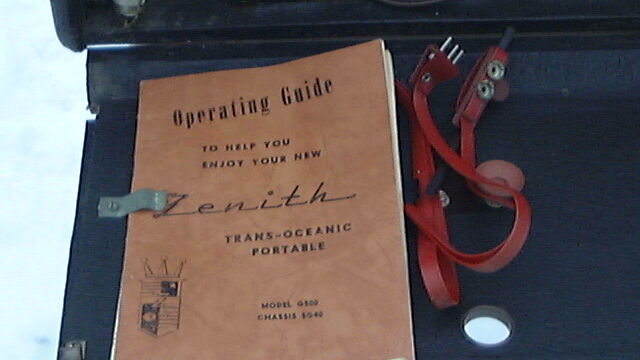 This Trans-O is complete with Wave-Magnet connector lead and original Users Manual. Loctal tubes disappeared with the production of the G500 and were replaced with 7-pin minatures including the coveted and sought after rare 1L6 converter tube. 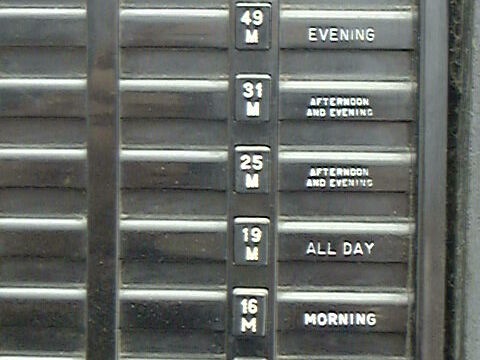 The Trans-Oceanics, beginning with the original Bomber, broadcast on 6 bands. Later, the additional 2-4 MC was added. 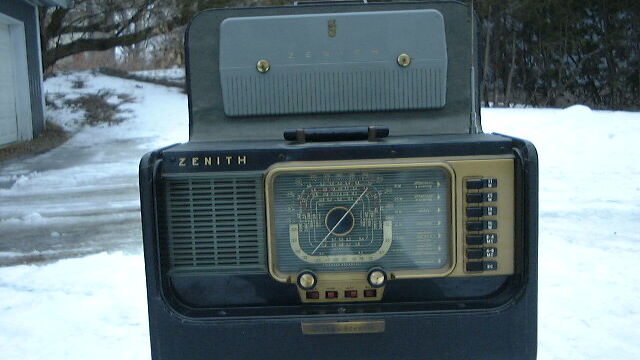 Zenith introduced the H500 Trans-Oceanic in the spring of 1951. Production lasted thru 1953. 500 units were produced into early 1954. 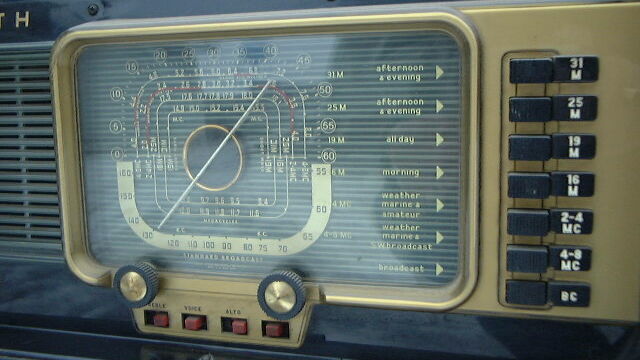 The H500 underwent a complete facelift, the first since the post-War model 8G005Y introduced in 1946. 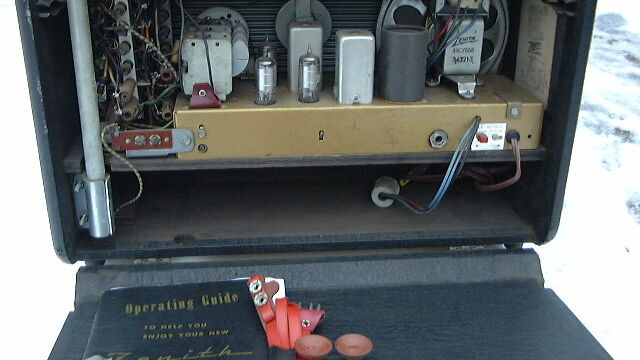 This Trans-O has the Wave-Magnet connector cable, manual and set of clips for extra tubes. Connectors beneath the chassis are for battery. 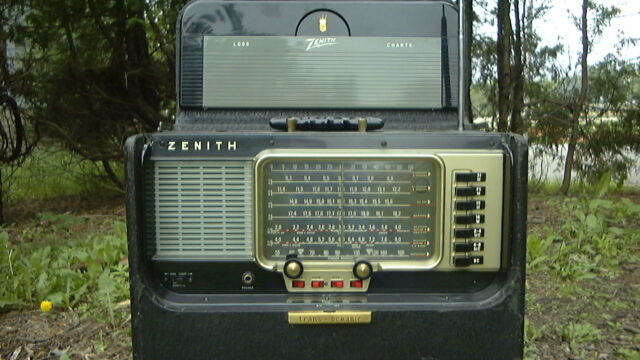 Zenith introduced the 600 Series Trans-Oceanics in late spring 1954 with the letter L. The Trans-O pictured is letter Y introduced in early summer 1956 and continued through 1957 with 53,124 units produced. 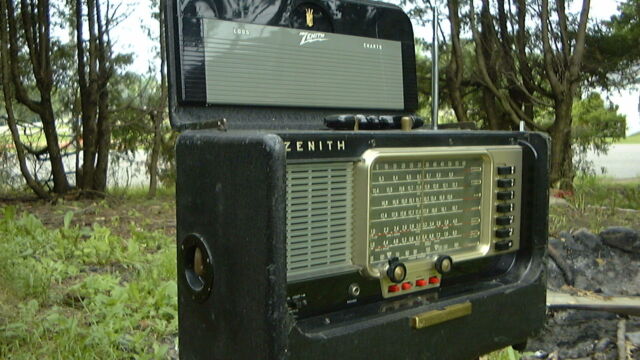 Zenith introduced the 600 Series Trans-Oceanics in late spring 1954 with the letter L. The Trans-O pictured is letter Y introduced in early summer 1956 and continued through 1957 with 53,124 units produced. 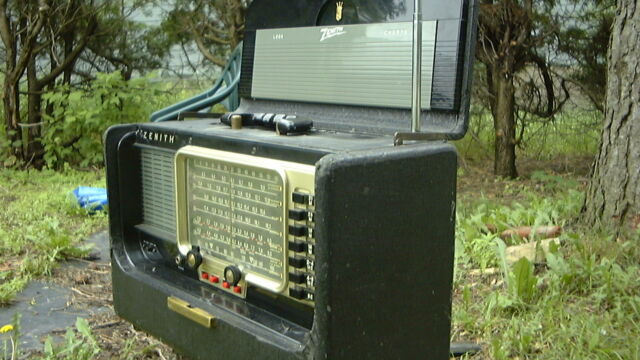 Mounted on the left-hand side of the cabinet (not pictured) was a receptacle into which the power cord was connected for battery operation. The power cord was retractable, a new feature introduced with the 600 series 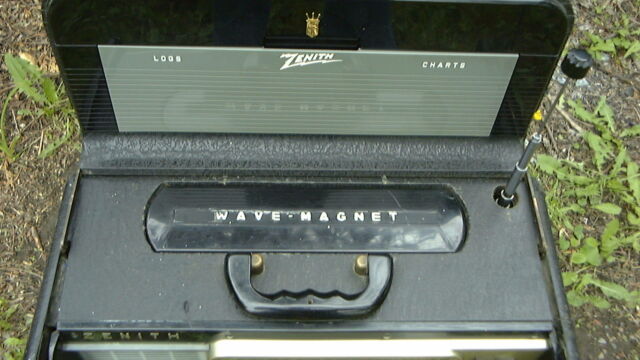 The Wave-Magnet moved from inside the front cover to the top of the cabinet and assesable for removal via a finger opening inside the rear cabinet. 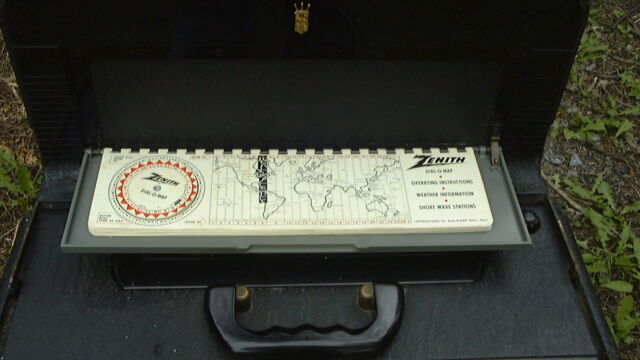 The log and chart book provided useful information for local and long-distance DXing. 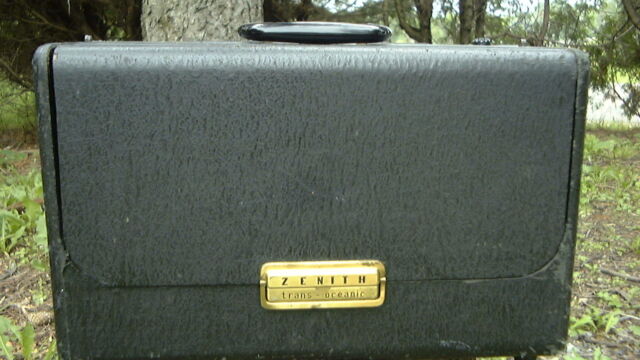 Zenith gave the design of the black-stage cabinet a modest facelift, too. It still retained its rugged good looks and durability. 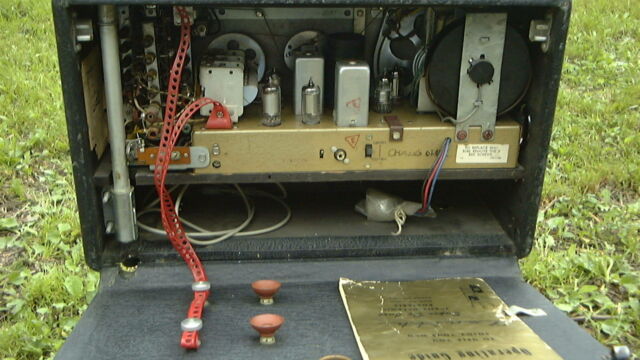 The chassis is the 6T40Z. Note the rubber suction cups for attaching the Wave-Magnet to a plane, train or vehicle window. The connecting cable is mounted inside. The clips for extra tubes present on previous Trans-Os, disappeared with the introduction of the 600 series. 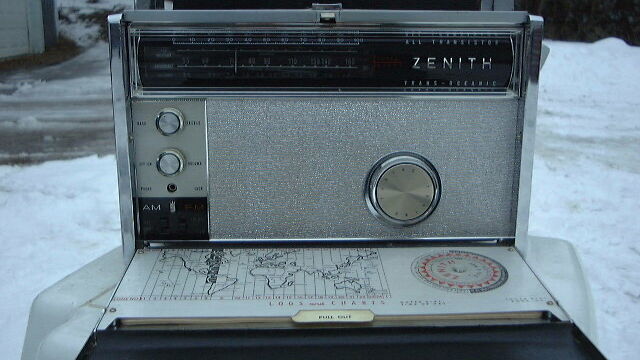 Zenith introduced the all-transistor Trans-Oceanic with its 1000 series just before Christmas, 1957. It was an immediate success out-selling the all-tube 600 series. Pictured here is the 3000-1 Trans-O. The 3000 was introduced in November 1962. 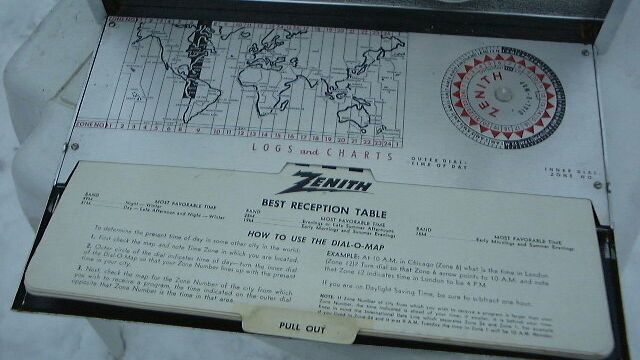 The pull-out LOG CHART was stored inside the front cover underneath the handsome brushed aluminum panel which depicted a map showing time zones throughout the world. 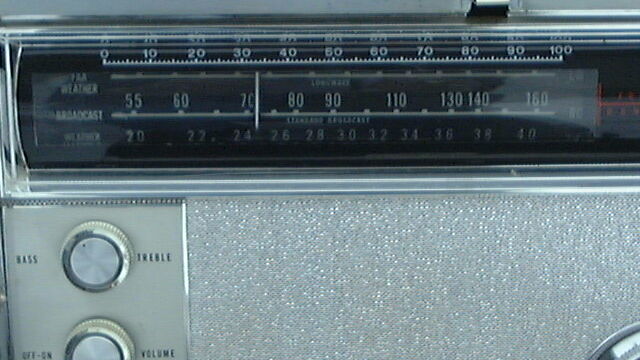 My Trans-O is the 3000-1 introduced by Zenith early December 1963 and has a manufacturers date code of Nov. 1965. 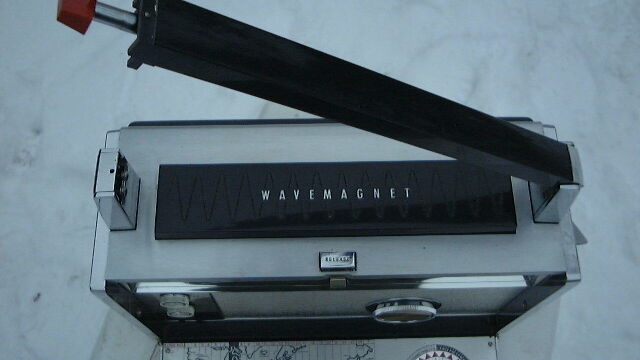 The Wave-Rod antenna extended a total distance of 5 feet. 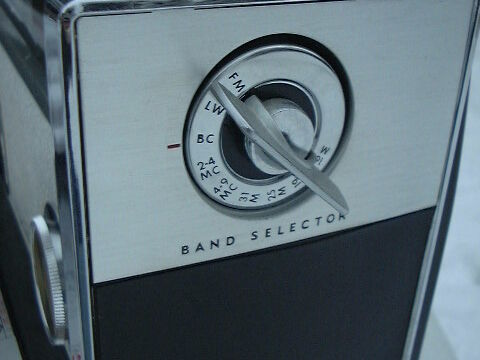 With the increasing addition of FM radio stations and interest in FM radio listening, the 3000 added the FM band of frequencies. It also featured the added Long Wave band of frequencies which primarily broadcast weather information. 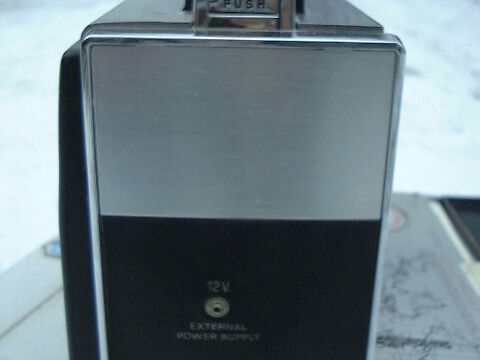 The number 1 of the 3000-1 series designated a 12 volt input located on the left-hand side of the cabinet for connecting a 12 volt battery eliminator. 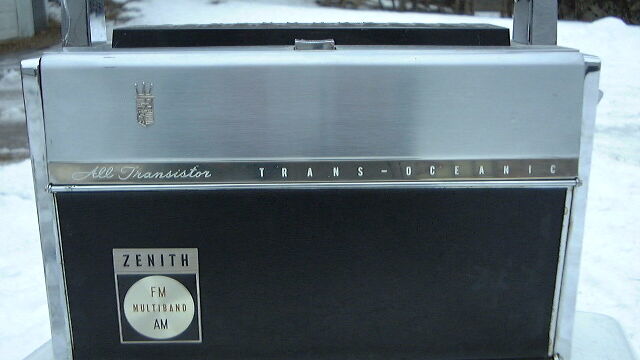 The 3000-1 continued through 1971 production. Perhaps the most handsome case of all, my opinion, is the 3000-1 shown with its case closed and ready for travel. 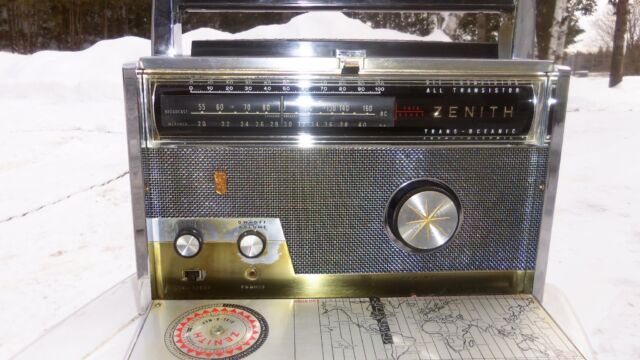 The 3000-1 continued through 1971 production. Perhaps the most handsome case of all, my opinion, is the 3000-1 shown with its case closed and ready for travel. 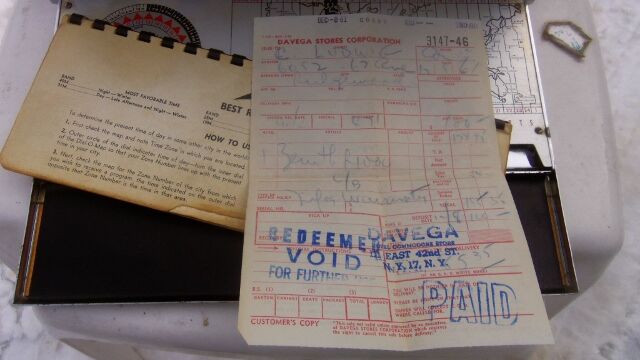 When I purchased the radio, the original sales receipt was included. The purchase date was 12/08/61 and sold for $179.95 plus tax. It was purchased from a department store in New York City. 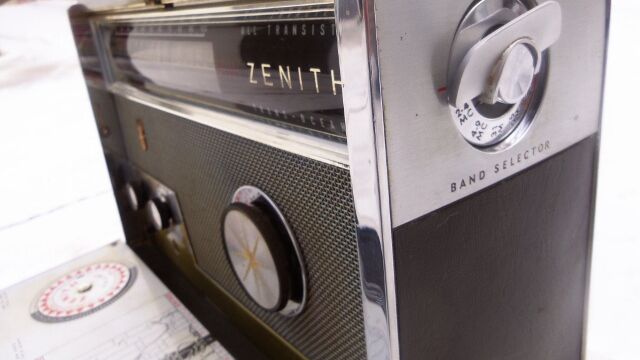 Band selection is completed with the control on the R.H. side of the case. Notice the the brushed aluminum is pit-free. The aluminum overall with the exception of the covering on the front cover is pit-free. Amazingly the cabinet is in very good condition which is rare as the early 1000 Royals had poor quality metals that pitted easily. By the time the 3000 Royal Series was introduced in Nov. 1963, this problem had been for the most part alleviated. 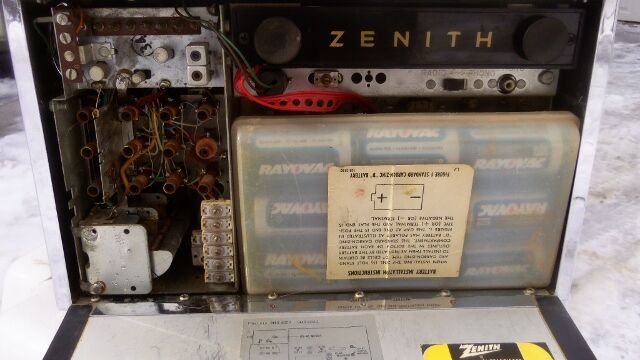 The back cover drops down to expose the battery pack. The container was badly corroded and contacts had to be constructed to replace the damaged ones. Also the tuning condenser was frozen as the radio had not been used for years. When freed and new batteries installed, the radio performance was exception across the band with selectivity, sensitivity and volume. 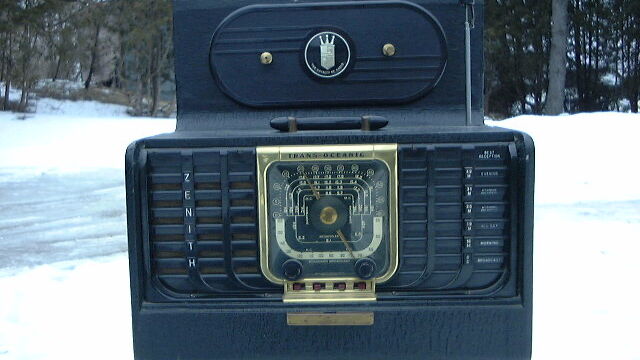 Perhaps the G500 is one of the more collectible Trans-Oceanics as the 1950-1951 production run totaled 89,681 units as compared to the B600 9-year run of 270,000 units. 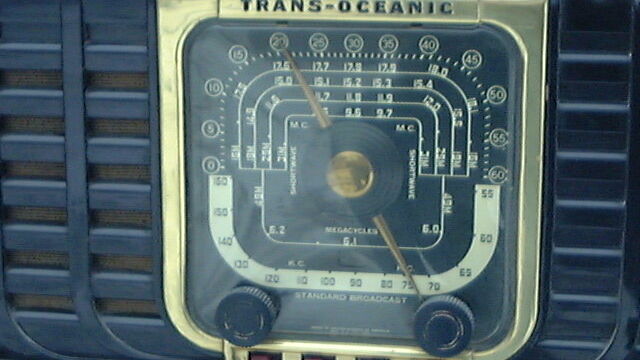 Zenith made no changes in the Post-War cabinet styling of the Zenith Trans-Oceanic through production of the G500.
Zenith
|
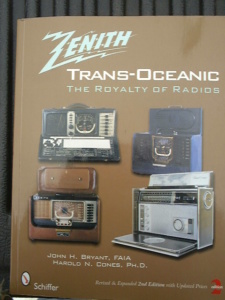 Recommended Reading 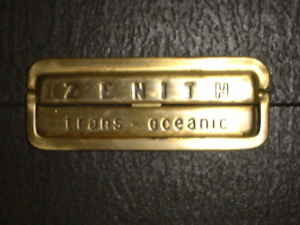 Y600 Latch Y600 Latch
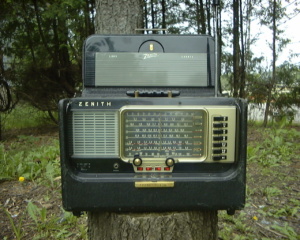 Zenith Y600 c. 1956 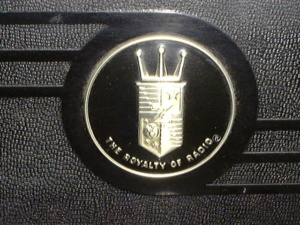 G500 Logo |
























